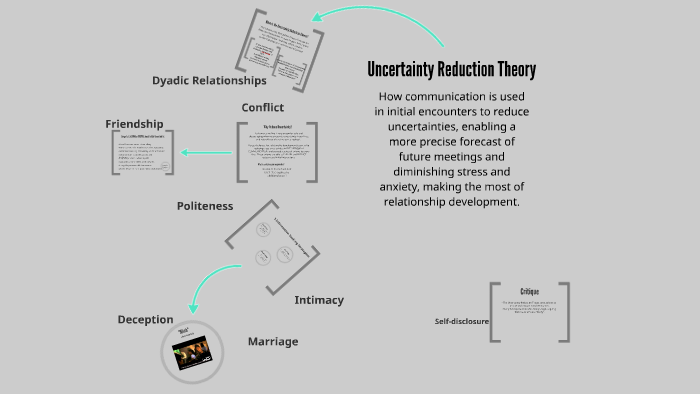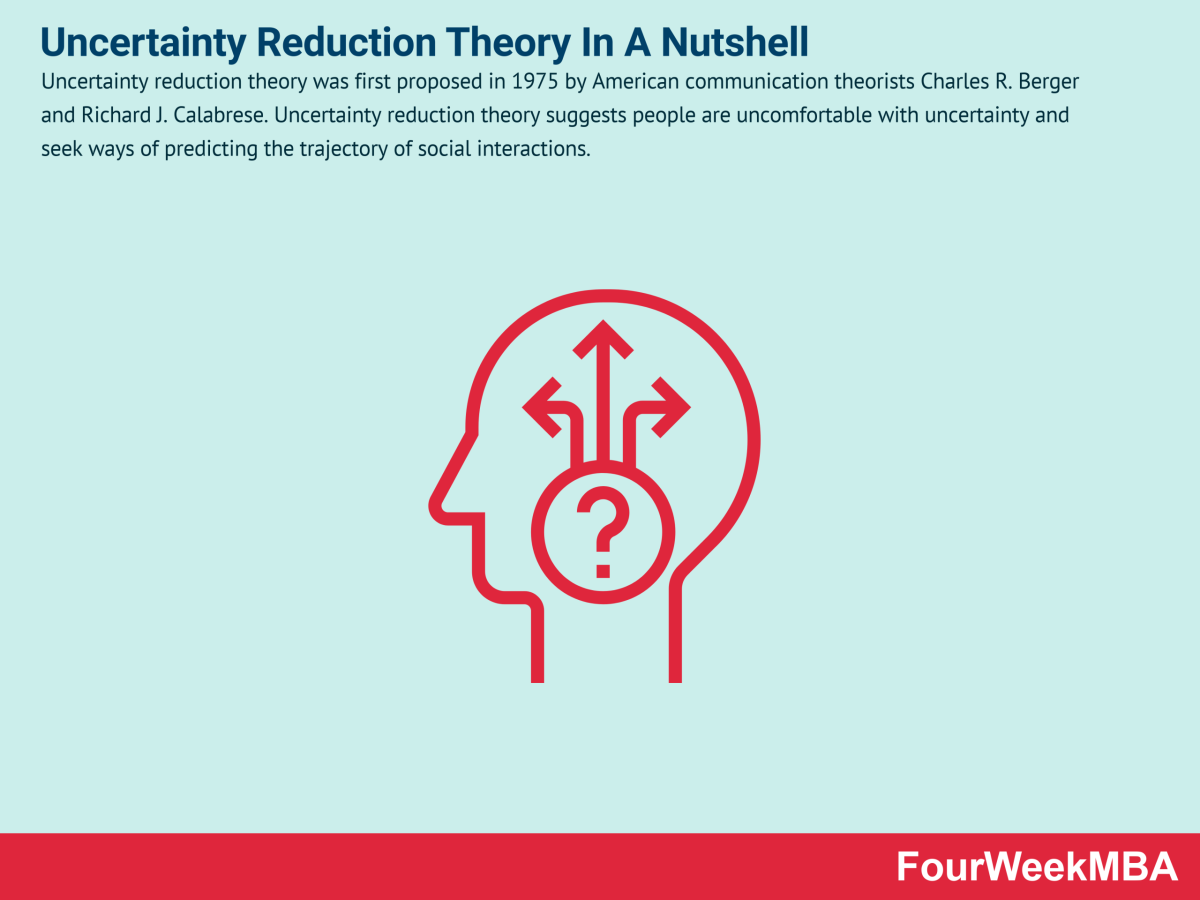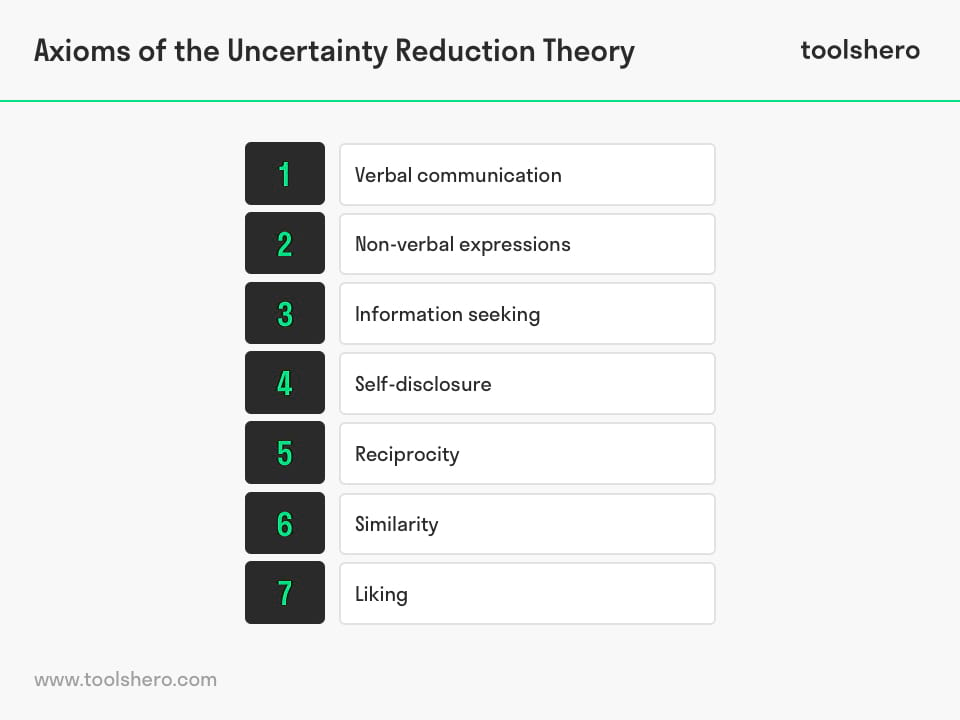Berger Uncertainty Reduction Theory
Their objective was to understand how two individuals communicate with each other during an initial encounter. They wanted to explain how interpersonal communication is used to reduce uncertainty between.

The Uncertainty Reduction Theory Charles Berger By Estephanie Ortiz
Berger and Richard J.

. Uncertainty reduction theory URT was originally created to explain the communication process that occurs when two strangers interact. It was developed by Charles Berger and Richard Calabrese in 1975. Uncertainty Reduction Theory was introduced in 1975 in a paper entitled Some Exploration in Initial Interaction and Beyond.
Treats William Gudykunsts anxietyuncertainty reduction theory. Uncertainty reduction theory otherwise known as initial interaction theory is something that was introduced in 1975 by Charles Berger and Richard Calabrese. Central to the present theory is the assumption that when strangers meet their pri-mary concern is one of uncertainty reduction or increasing predictability about the.
The uncertainty reduction theory explores the initial interaction between people that occurs before the actual communication process and is hence also known as initial interaction theory. Charles Berger and Richard Calabrese 1975 observed that when we interact with strangers we experience uncertainty because we dont really know what to expect. Uncertainty Reduction is used to _________ and __________.
Charles Berger through Uncertainty Reduction Theory proposes that the beginnings of personal relationships are filled with uncertainties. Calabrese was proposed to predict and explain relational development or lack thereof between strangers. Uncertainty reduction theory focuses on how human communication is used to gain knowledge and create understanding.
History of Uncertainty Reduction Theory. Any of three prior conditionsanticipation of future interaction incentive value or deviancecan boost our drive to. Uncertainty Reduction Theory is a communication theory that came about through the research of Charles Berger from the post-positivist tradition.
Uncertainty Reduction Theory URT is a theory from the field of interpersonal communication that seeks to explain how uncertainty or lack of knowledge drives interpersonal communicationThis initial approach to uncertainty management theories dramatically shaped scholars understanding of the way people manage uncertainty Afifi 2009 p. They wanted to explain how communication is used to reduce uncertainties between strangers engaging in their first conversation together. On how human communication is used to gain knowledge and create understanding.
See Chapter 8 Bergers uncertainty reduction theory URT focuses on how human communication is used to gain knowledge and create understanding. -When strangers meet their primary concern is to reduce their uncertainty and increase predictions. Berger and Calabrese claim that as the.
They believed that when two strangers meet for the first time the situation. Find more resources on this and other communication theories at wwwafirst. The uncertainty reduction theory was created in 1975 by Charles Chuck Berger and Richard CalabreseIt seeks to understand how communication functions.
The theory is concerned with how people communicate and how knowledge is shared and understood. This theory of interpersonal communication is a result of Bergers and. Uncertainty Reduction Theory URT In 1975 communications researchers Charles Berger and Richard Calebrese developed the uncertainty reduction theory URT.
-Interpersonal communication is a developmental process that occurs through stages and it is the primary means of uncertainty reduction. Interview conducted by Em Griffin author of A First Look at Communication Theory. Can boost our drive to reduce uncertainty.
Essay Question 10 elow is designed to anticipate the section of the book thatb focuses on gender and communication. Toward a Developmental Theory of Interpersonal CommunicationThis theory a collaborative effort of Charles R. Berger suggests that anticipation.
Anticipation of future interaction incentive value or deviance. Particularly relevant perhaps is Deborah Tannens genderlect styles. -People experience uncertainty in interpersonal settings and it generates cognitive stress.
Gudykunst extends Bergers work into intercultural contexts. Charley Berger and Richard Calabrese created the Uncertainty Reduction Theory in 1975 in an attempt to describe the communication process when people meet for the first time. The theory asserts the notion that when.
Charles Berger notes that the beginnings of personal relationships are fraught with uncertainties. Charles Berger objective Uncertainty reduction theory focuses.

What Is The Uncertainty Reduction Theory Uncertainty Reduction Theory In A Nutshell Fourweekmba

Charles Berger On Uncertainty Reduction Theory Youtube

Uncertainty Reduction Theory Toolshero

Sales 101 Uncertainty Reduction Theory And Inbound Marketing Business 2 Community
Comments
Post a Comment